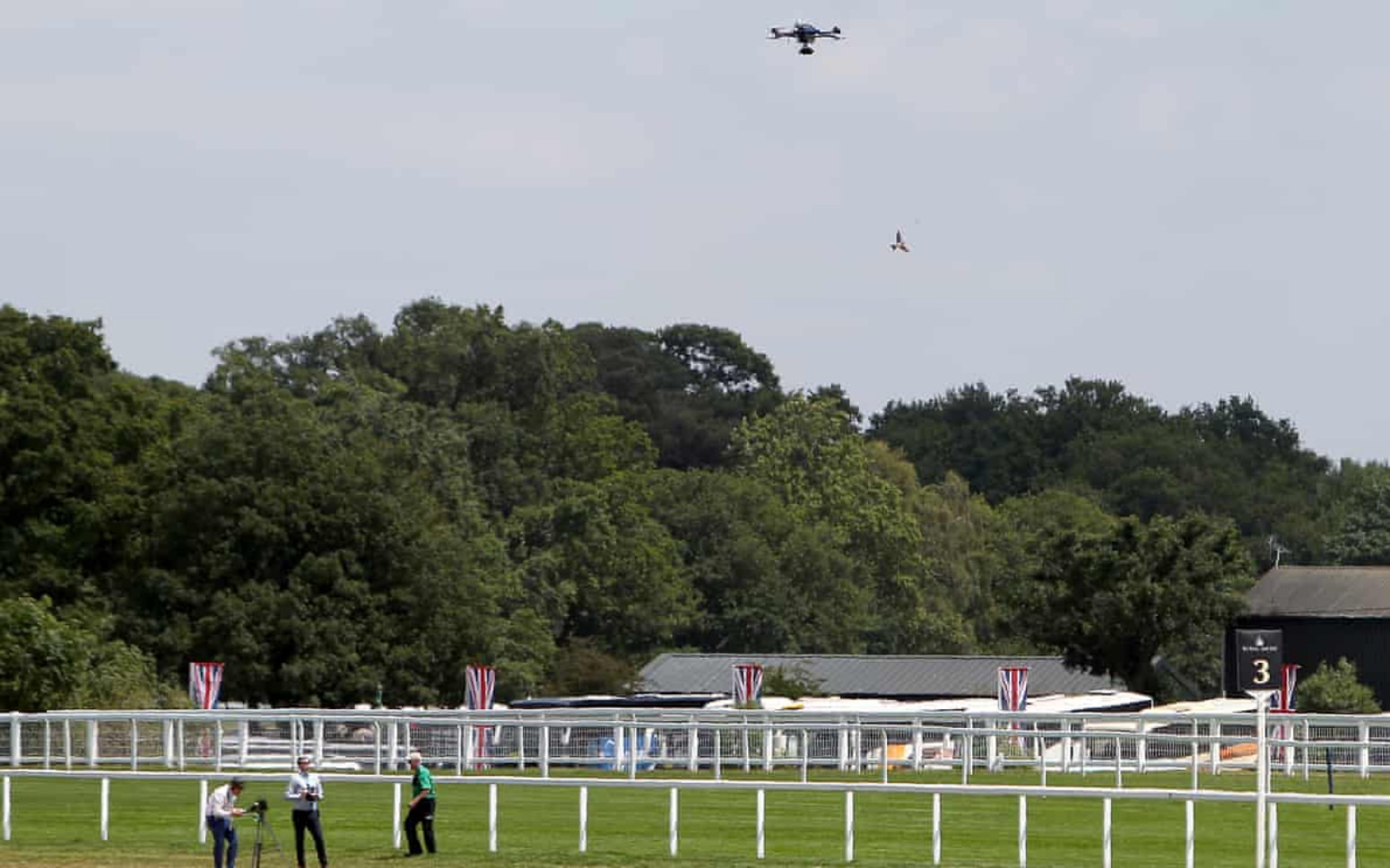
The tumult in the UK over drones live-streaming horse races to provide an advantage to clients in betting rings has reached a new pitch, with clearly displeased and disapproving politicians joining the debate. Their earnest outrage notwithstanding, the desire to thwart the lucrative practice continues to be undermined by a confounding consideration: The activity isn’t illegal under existing laws.
By this point, the pilots who fly their drones to broadcast real-time video of horse races must feel like just about everyone who possibly can has tried to thwart their profitable endeavors. Local authorities, track and horse owners, police patrols, and even neighbors in areas from which the UAVs are flown have repeatedly sought to have the UAVs confiscated, and the operators chased off or imprisoned. Thus far, however, that effort to provide paying bettor clients with a seemingly advantage that others don’t enjoy has flourished in the absence of laws that specifically prohibit it.
Those live feeds are precious to so-called in-running gamblers, who lay wagers as races progress by acting on visual evidence of a horse suddenly surging or fading. Whereas official footage from racetracks is beamed to parimutuel betting businesses with time delays of a couple seconds or more, the UAV streams go directly to bettor clients without lags, offering a short but valuable edge.
Efforts to cinch up the legal loopholes permitting are being made, but with contrasting results.
This month, the matter drones live-streaming horse races was examined by the UK’s upper legislative chamber, the House of Lords. Yet despite lavish harrumphing to denounce it, the activity doesn’t appear to have been pushed any closer to lawful interdiction.
For example, while Lord Lipsey attacked the practice as “foul play, and it must be stopped,” a review of standing legislation confirmed the pilots were in their rights to fly as they wished – provided they obey general UAV operating rules.
He similarly acknowledged that under existing broadcasting arrangements, drone pilots live-streaming the events do not appear to be violating the rights of companies contracted to televise horse races. “[S]porting performances are not considered intellectual creations since the rules of sport leave only limited room for real creative freedom,” concurred Lord Callaghan on the matter.
In addition, Lord Callaghan was quoted by Racing Post noting that an inquiry by the UK’s Gambling Commission had “found little evidence that illegal drone filming is linked to illegal gambling sites.” His lordship presumably meant “objectionable” UAV broadcasting, since pilots would have been busted, tried, and locked in gaol long ago were they breaking laws (hence their parliamentary discussion).
So despite of the considerable outrage expressed, the upshot of the Lords’ debate came back to the same starting point as other consultations have: Governments must take action to table new legislation based on reasons of sound legal, security, or public order for justifying banning the activity, then convince parliamentarians to pass it into law – which thus far isn’t happening in the UK.
It is, however, a step the Irish legislature took this month when a bill was introduced to take on the practice that’s also been transplanted to Ireland. Many of the same actors in the UK have reportedly begun bringing their drones to the country to broadcast major horse races, placing track owners, cops, and politicians in the same legal bind as in Blighty. Laws and TV rights aren’t being violated, and UAV operators are extremely well versed on what they can and cannot get away with.
“These guys have no fear of the law here at all,” the Irish daily Independent quoted Eamonn McEvoy, manager of the Naas track outside of Dublin.
McEvoy ought to know. Last March, he witnessed the upshot of a pair of men belonging to one UK drone filming crew being sent over to straighten out a rival crew considered muscling in on their Irish horse filming turf – and getting more than they bargained for.
“They had a BMW X5 rented from Dublin airport, and this guy rammed their car, drove into Naas, and ran through the raceday office with these guys after him,” McEvoy recalled in the Racing Post. “It was just by luck he got out through the other door before they got him.”
The police were called in to prevent further confrontation, but could do nothing about underlying drone broadcasts of the races. The bust-up was sufficiently dramatic, however, for Horse Racing Ireland to mount a lobbying campaign to pressure legislators to do something about the problem – resulting in this month’s draft law.
It may well be, then, that drone pilots filming horse races wind up falling afoul of the law not by their aerial activity, but rather their overly competitive streak on the ground.
FTC: We use income earning auto affiliate links. More.




Comments